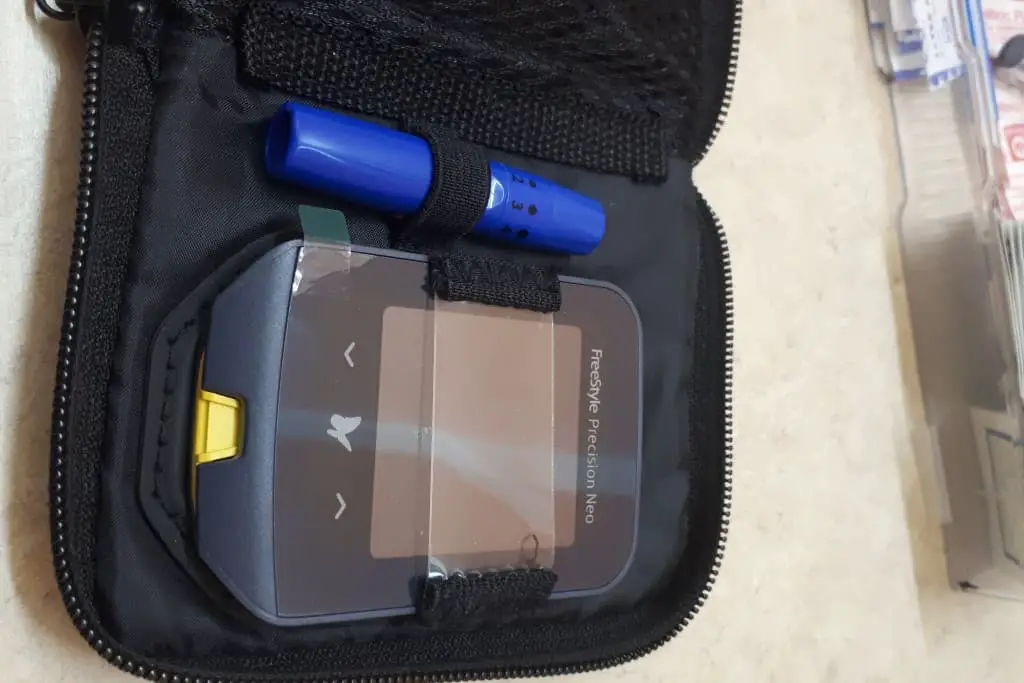
Testing your blood sugar is like checking the weather before heading out—you want to know what’s going on so you can plan accordingly. But what if your “forecast” is off because of a few simple mistakes? Accurate blood sugar readings are super important, whether you’re managing diabetes or just keeping an eye on your health.
Let’s talk about some common blood sugar testing mistakes and how you can avoid them.
1. Not Washing Your Hands Before Testing
One of the simplest yet most crucial steps in blood sugar testing is washing your hands thoroughly before pricking your finger. Residual substances on your skin, such as food (sugar) can contaminate the blood sample and lead to inaccurate readings.
Tip: Always wash your hands with soap and warm water, then dry them completely before testing. If you’re unable to wash your hands, use an alcohol swab to clean the testing area, but let it dry completely before proceeding.
2. Incorrect Storage of Test Strips
Test strips are sensitive to environmental factors such as temperature, humidity, and light. Storing them improperly can affect their accuracy.
Tip: Store your test strips in their original container, and keep the container tightly closed when not in use. Avoid storing them in the bathroom, car, or any place with fluctuating temperatures. Check the expiration date regularly and discard any expired strips, as using expired ones may give inaccurate readings.
3. Not Using Enough Blood
If you don’t apply enough blood to the test strip, the meter might give an error message, or worse, it might provide a false reading. Many people are tempted to squeeze their finger excessively to get more blood, but this can dilute the sample with interstitial fluid, leading to inaccurate results.
Tip: Make sure your hands are warm before testing, as this improves blood flow. Hang your hand down at your side for a few seconds. Prick the side of your finger and gently massage toward the fingertip to get a good drop of blood. If you are not getting enough blood you may need to look at the depth. Maybe the puncture might not be deep enough.
4. You Share Finger Sticks and Meters
Your blood glucose meter should only be used by you. If you can use lancets that retract after one use, that would be a good idea. You can toss them into your sharps container right after you use them. However, you may not have those. Whichever lancets you use, make it a rule of thumb to discard them right after use. Neither your lancets or meter are for sharing. If you must share your meter though, follow your manufacturer’s directions for cleaning and disinfecting before and after use.
5. Squeezing Your Finger Too Hard
Follow your meters’ instructions for which drop of blood to use, whether it’s the first or second. If you are unable to wash your hands, wipe off the first drop of blood and use the second. However, don’t put too much pressure on the site or squeeze it too hard. Doing so can throw off your reading.
6. Ignoring Calibration and Meter Maintenance
Meters often require calibration or routine checks to ensure they’re working properly. Ignoring this step can result in inaccurate readings, even if you’re doing everything else correctly.
Tip: Follow the manufacturer’s instructions for calibrating your meter. Some models need calibration with a solution provided by the manufacturer, while others have an automatic calibration feature. Also, clean your meter regularly and replace batteries as needed to ensure it’s functioning properly.
7. Neglecting to Record Results
Failing to record your blood sugar levels can make it difficult to track your progress and identify trends that might need medical attention. Relying solely on memory can lead to an incomplete or inaccurate understanding of your blood sugar control.
Tip: Use a logbook, mobile app, or your meter’s built-in memory to record your readings. Make notes about any factors that might have affected the result, such as food intake, stress, or physical activity. Regularly review these records with your healthcare provider to adjust your management plan as needed.
8. Your Ignore Wonky Readings
Don’t dismiss meter readings that are off. Take your blood glucose meter to your next doctor’s visit or when you need lab work. When your blood is drawn, do a separate prick for your glucose meter. When the lab results come back, compare them to your meter’s reading. You will want your meter’s readings to match up within 15% of the lab’s report.
9. Relying Solely on Technology
While modern glucose meters are generally reliable, it’s essential to recognize that they’re not infallible. Relying solely on your meter without considering how you feel can be risky.
Tip: Always consider how you feel in conjunction with your meter readings. If your meter gives you a result that doesn’t match how you feel (e.g., it says you’re fine, but you feel shaky and weak), test again or seek medical advice.
10. You Don’t Test Often Enough
How often should you check your blood sugar? At least as often as your treatment plan states. Don’t just test once or not at all a week. Your plan may require you to do it more often. Things like a change in routine, being sick, or a new medication may mean you’ll need to test more often too. So, follow your plan given to you by your doctor.
11. You Are Not Hydrated Enough
Drinking plenty of water is good for your blood. It keeps sugar levels at their right concentration. When you don’t drink sufficient amounts of water your blood sugar gets more concentrated and that can throw off your glucose reading. So, stay well hydrated.
12. Testing at Random Times
Testing your blood sugar whenever you feel like it might not give you the full picture. Your levels change throughout the day, so timing matters if you want to get accurate readings.
Quick fix: Stick to a routine. Common times to test include before meals, a couple of hours after eating, and before bed. Your doctor might give you specific times based on your health needs, so follow their advice.
Wrapping It Up
Getting accurate blood sugar readings doesn’t have to be tricky. By avoiding these common mistakes, you’ll get better insights into your health, helping you make smarter decisions day in and day out. If you are ever unsure about your results, don’t hesitate to talk to your doctor and get help.
